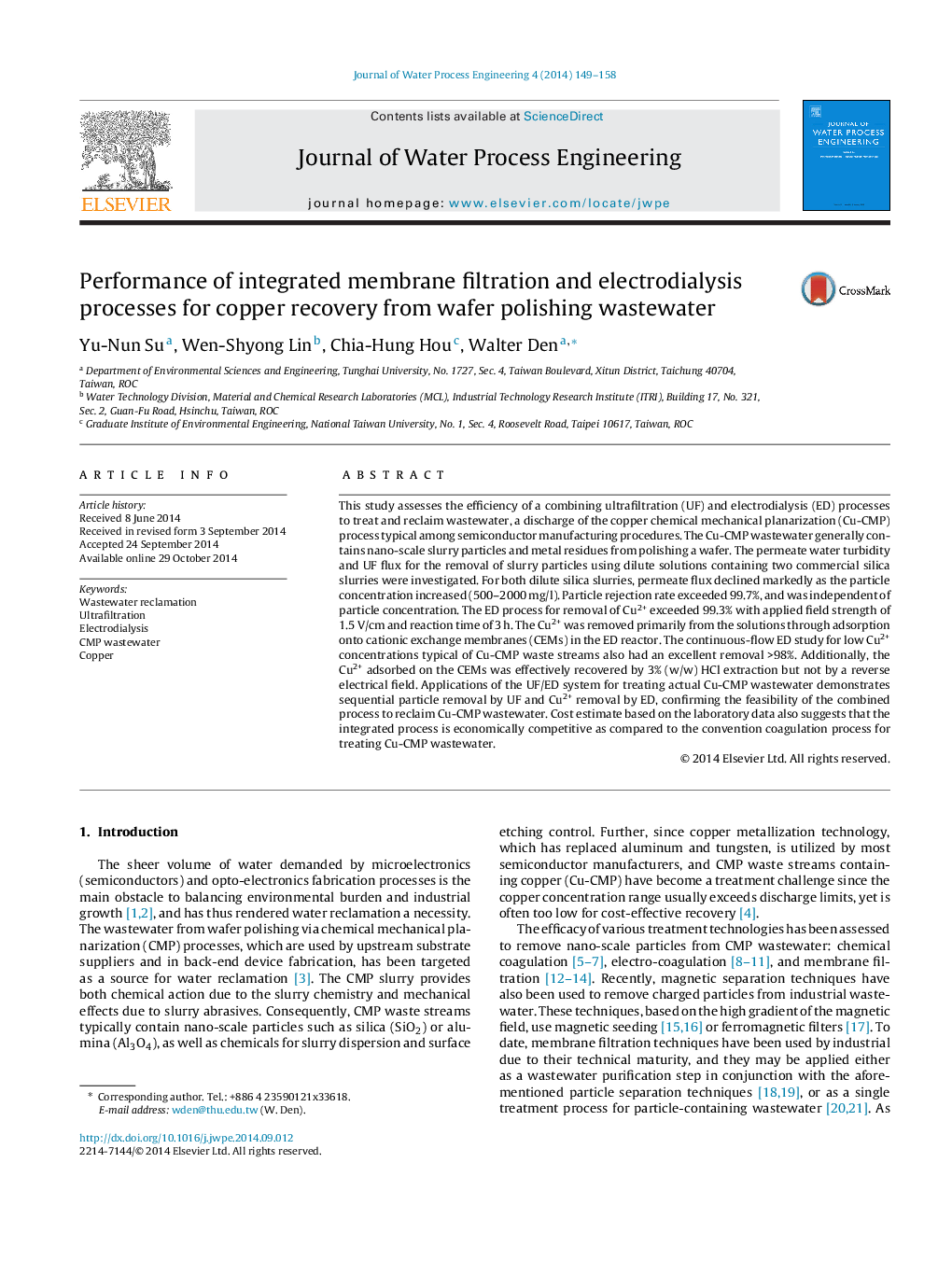| Article ID | Journal | Published Year | Pages | File Type |
|---|---|---|---|---|
| 232551 | Journal of Water Process Engineering | 2014 | 10 Pages |
This study assesses the efficiency of a combining ultrafiltration (UF) and electrodialysis (ED) processes to treat and reclaim wastewater, a discharge of the copper chemical mechanical planarization (Cu-CMP) process typical among semiconductor manufacturing procedures. The Cu-CMP wastewater generally contains nano-scale slurry particles and metal residues from polishing a wafer. The permeate water turbidity and UF flux for the removal of slurry particles using dilute solutions containing two commercial silica slurries were investigated. For both dilute silica slurries, permeate flux declined markedly as the particle concentration increased (500–2000 mg/l). Particle rejection rate exceeded 99.7%, and was independent of particle concentration. The ED process for removal of Cu2+ exceeded 99.3% with applied field strength of 1.5 V/cm and reaction time of 3 h. The Cu2+ was removed primarily from the solutions through adsorption onto cationic exchange membranes (CEMs) in the ED reactor. The continuous-flow ED study for low Cu2+ concentrations typical of Cu-CMP waste streams also had an excellent removal >98%. Additionally, the Cu2+ adsorbed on the CEMs was effectively recovered by 3% (w/w) HCl extraction but not by a reverse electrical field. Applications of the UF/ED system for treating actual Cu-CMP wastewater demonstrates sequential particle removal by UF and Cu2+ removal by ED, confirming the feasibility of the combined process to reclaim Cu-CMP wastewater. Cost estimate based on the laboratory data also suggests that the integrated process is economically competitive as compared to the convention coagulation process for treating Cu-CMP wastewater.
